AI Agents: From $8K to $50K/Month
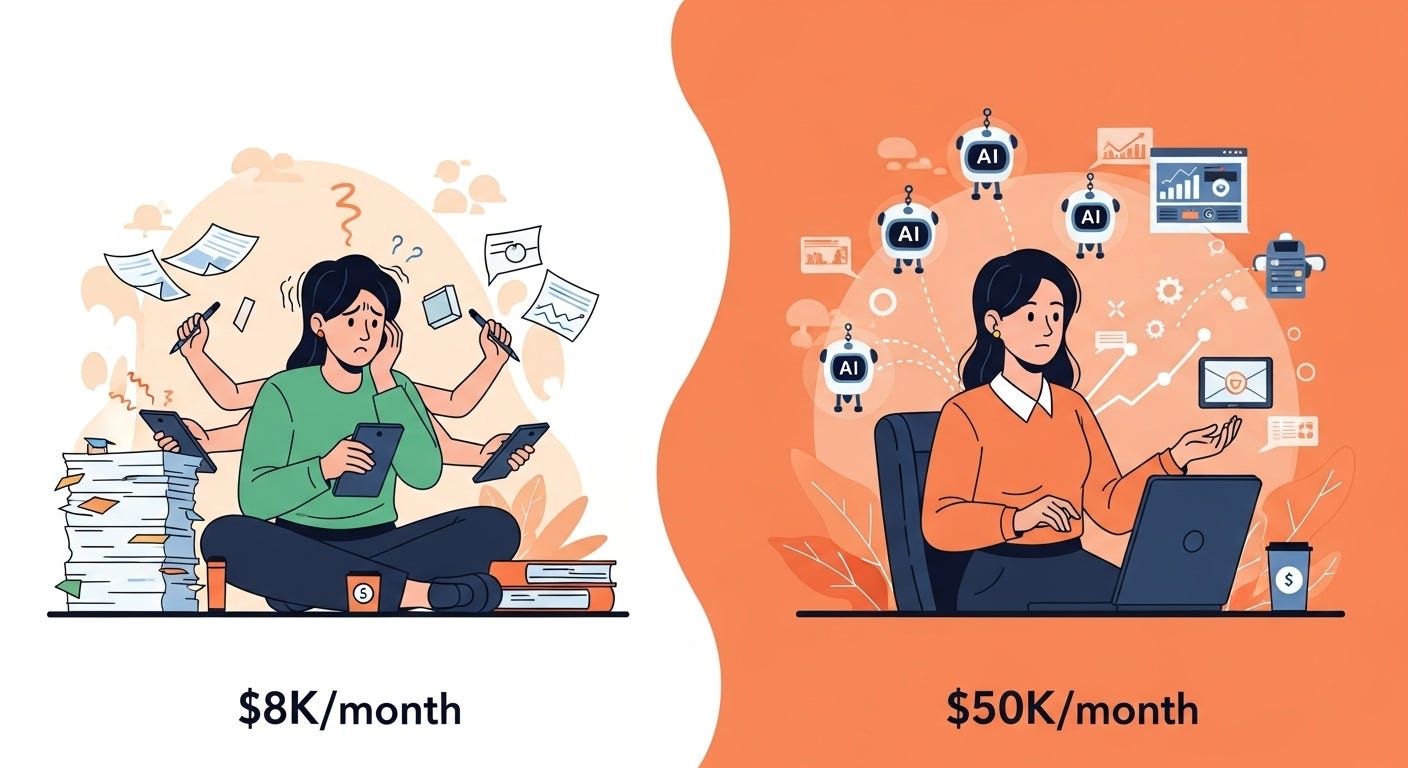
Maria was stuck at $8,000 per month, and she knew exactly why.
Every client required her personal attention for every task. Strategy sessions, content creation, project management, client communication — if it needed to be done right, Maria had to do it herself. She was the bottleneck in her own business.
Eight months later, she’s generating $50,000 monthly with the same time investment. The difference? She stopped trying to clone herself and started building an AI-powered team.
Here’s exactly how she did it.
The Solo Entrepreneur’s Dilemma
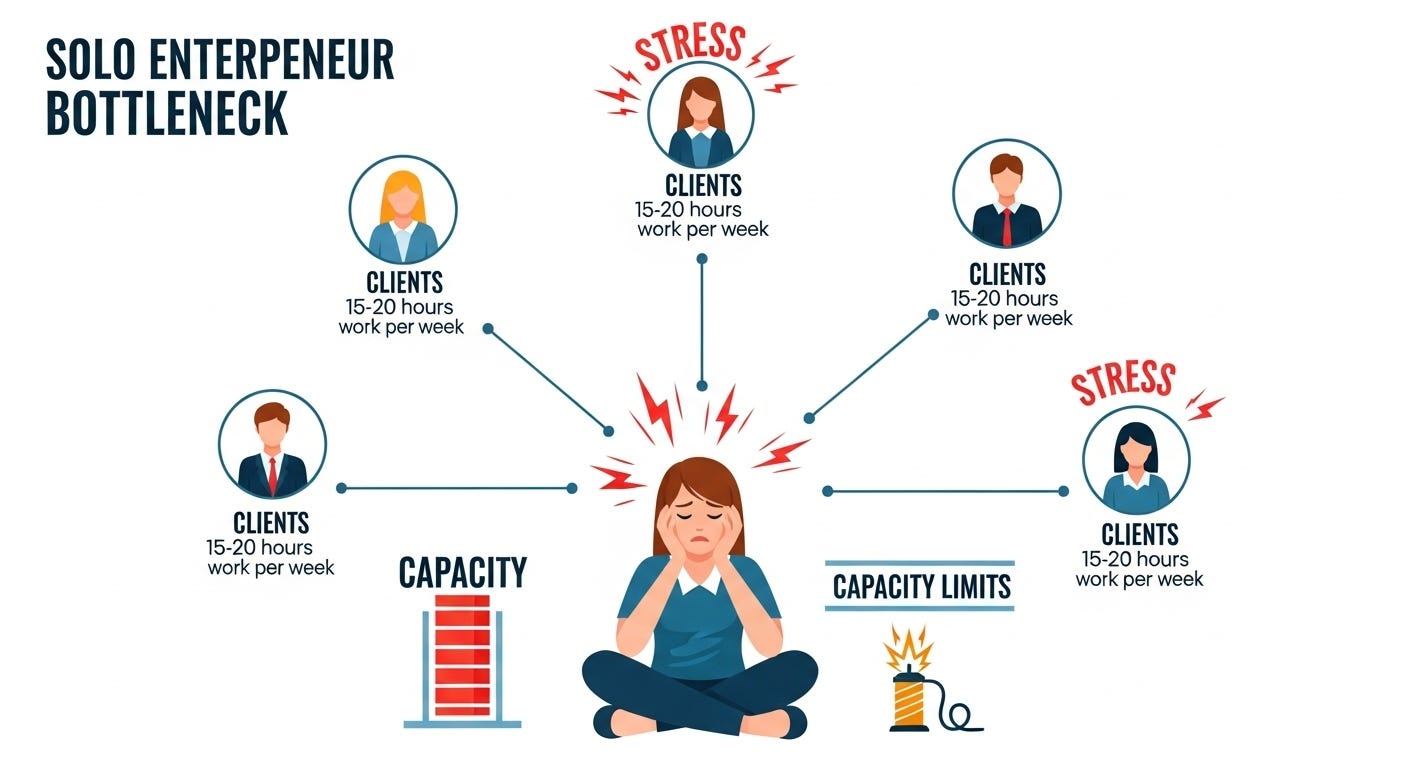
Maria started her marketing consulting business two years ago with a simple premise: help small businesses grow through better content and strategy. She was good at it — clients saw real results, referrals came naturally, and demand exceeded her capacity.
That’s when the problems started.
The Scaling Ceiling:
•Maximum 6 clients at $1,500/month each
•Every client required 15–20 hours of personal attention weekly
•No time for business development or strategic thinking
•Constant stress about maintaining quality while growing
The Traditional Solutions Didn’t Work:
•Hiring employees: Too expensive and risky for inconsistent revenue
•Freelancers: Quality control issues and management overhead
•Raising prices: Lost price-sensitive clients without solving capacity problem
•Productizing services: Clients wanted customization, not templates
Maria was trapped in the classic solo entrepreneur paradox: success that prevents further success.
The AI Experiment
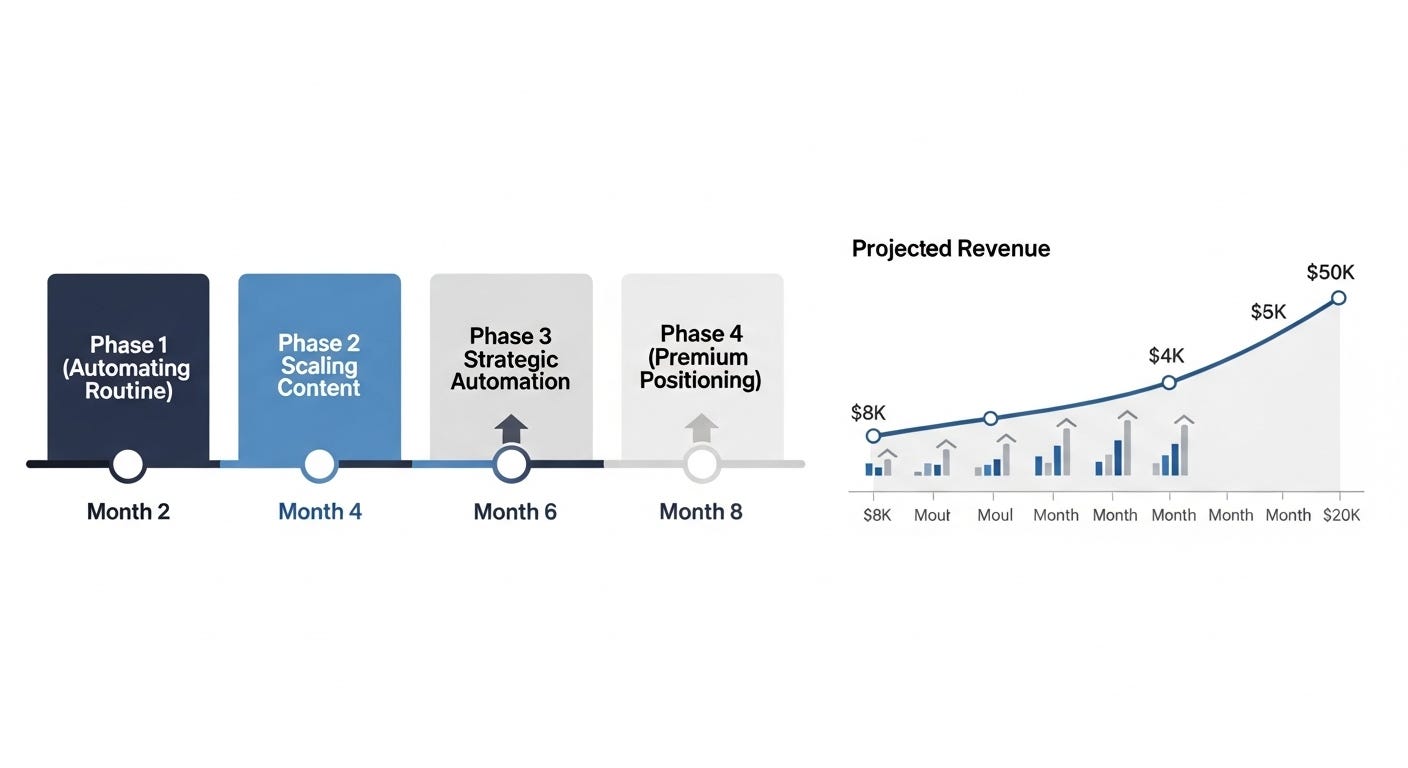
The breakthrough came during a conversation we had over coffee last year. Maria was frustrated, working 60-hour weeks while watching her business plateau. I suggested she experiment with AI agents — not as tools, but as team members.
Her initial reaction was skeptical: “AI can’t replace human creativity and strategy.”
She was right. But she was asking the wrong question.
The question wasn’t “Can AI replace me?” It was “Can AI handle the work that prevents me from focusing on what only I can do?”
Phase 1: Automating the Routine (Months 1–2)
Maria started with the most time-consuming, least creative tasks:
Client Onboarding:
•Before: 4 hours of manual setup per new client
•After: AI-powered onboarding sequence with automatic project setup
•Time Saved: 3.5 hours per client
Content Research:
•Before: 6 hours weekly researching industry trends and competitor content
•After: AI agents monitoring and summarizing relevant information daily
•Time Saved: 5 hours weekly
Project Management:
•Before: 2 hours daily updating project status and client communications
•After: Automated progress tracking and client updates
•Time Saved: 10 hours weekly
Results After 2 Months:
•18.5 hours weekly freed up
•Same 6 clients, but with capacity for more
•Reduced stress from administrative overhead
Phase 2: Scaling Content Creation (Months 3–4)
With routine tasks automated, Maria tackled the biggest bottleneck: content creation.
The Challenge: Each client needed 8–12 pieces of content monthly, all requiring Maria’s strategic input and creative oversight.
The Solution: AI-assisted content workflows that maintained quality while increasing output.
Blog Post Creation:
•Before: 3 hours per post (research, writing, editing)
•After: 45 minutes per post (AI draft, Maria refinement)
•Quality: Clients couldn’t tell the difference
Social Media Content:
•Before: 2 hours weekly per client
•After: 30 minutes weekly per client (AI generation, Maria approval)
•Output: Increased from 5 posts to 15 posts weekly per client
Email Campaigns:
•Before: 4 hours monthly per client
•After: 1 hour monthly per client
•Performance: Open rates improved 23% due to AI optimization
Results After 4 Months:
•Content output increased 300%
•Quality maintained or improved
•Capacity to serve 12 clients instead of 6
Phase 3: Strategic Automation (Months 5–6)
With content production optimized, Maria focused on higher-level business processes:
Client Strategy Development:
•AI analyzed client data and market trends
•Generated strategic recommendations for Maria to refine
•Reduced strategy session prep from 3 hours to 30 minutes
Performance Reporting:
•Automated data collection from all client platforms
•AI-generated insights and recommendations
•Monthly reports created automatically with Maria’s strategic commentary
Business Development:
•AI-powered lead research and qualification
•Automated follow-up sequences for prospects
•Proposal generation based on client needs analysis
Results After 6 Months:
•Serving 15 clients at $2,000/month each
•Monthly revenue: $30,000
•Working fewer hours than at $8,000/month
Phase 4: Premium Positioning (Months 7–8)
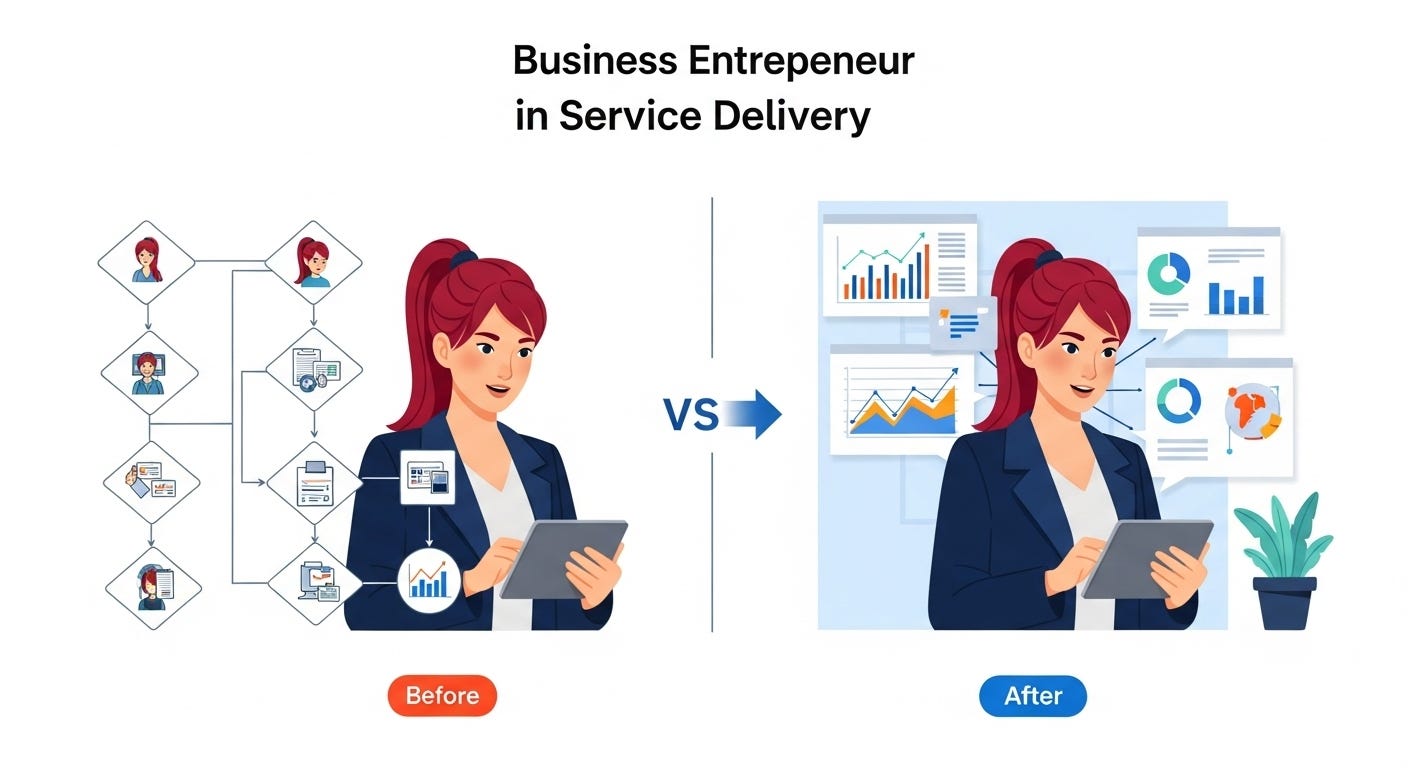
With operational efficiency mastered, Maria repositioned her business:
The Insight: AI didn’t just make her more efficient — it made her more strategic. With routine work automated, she could focus entirely on high-level strategy and creative direction.
New Service Model:
•Premium Strategy Consulting: $5,000/month for comprehensive business growth strategy
•AI-Powered Execution: $3,000/month for strategy implementation with AI assistance
•Hybrid Packages: $4,000/month combining strategy and execution
Value Proposition Shift:
•Before: “I’ll create content for your business”
•After: “I’ll build AI-powered growth systems for your business”
Results After 8 Months:
•12 clients at average $4,200/month
•Monthly revenue: $50,400
•Positioned as AI business consultant, not just marketer
The Numbers Breakdown
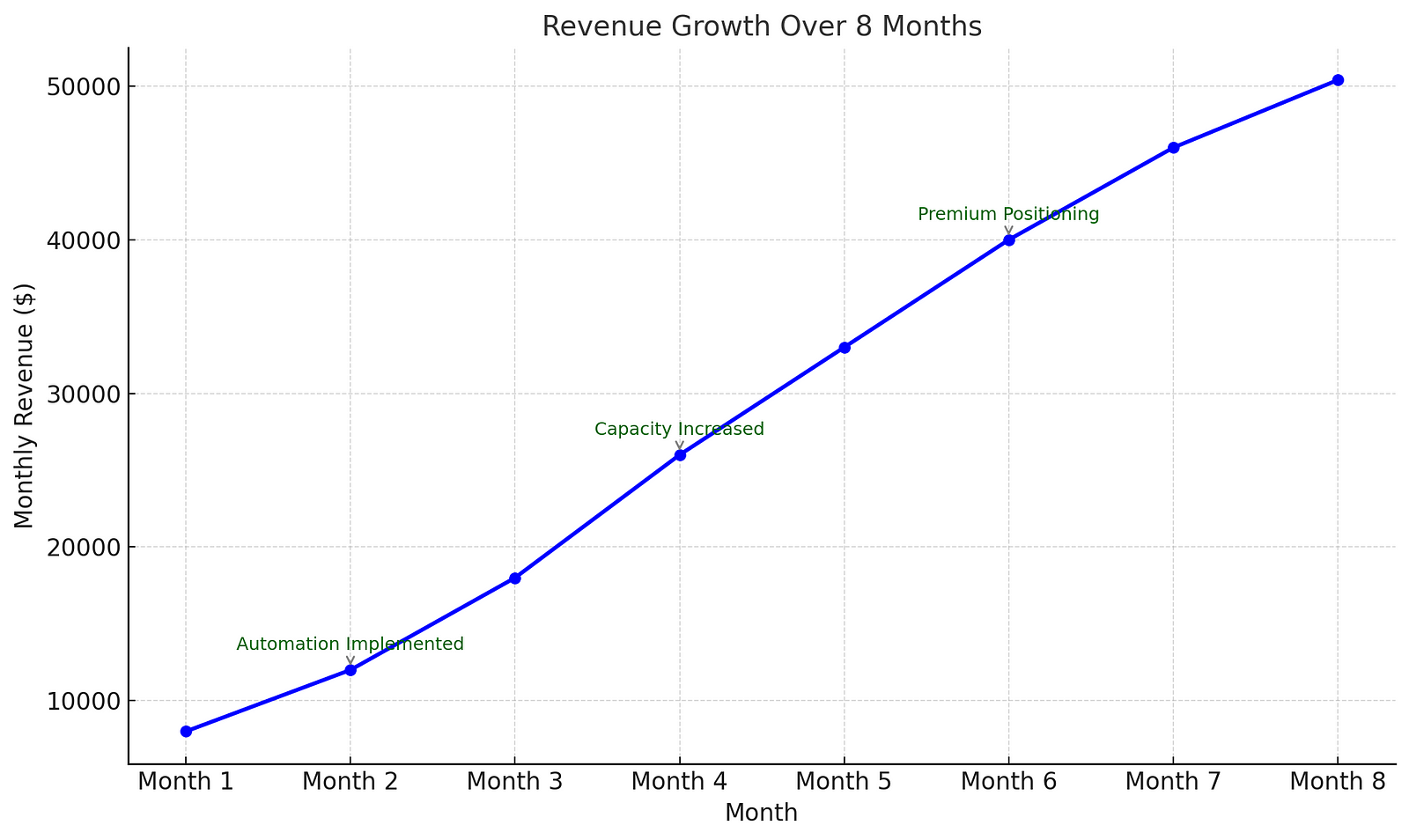
Revenue Growth:
•Month 0: 8,000/month(6clients×8,000/month (6 clients × 8,000/month(6clients×1,333 average)
•Month 8: 50,400/month(12clients×50,400/month (12 clients × 50,400/month(12clients×4,200 average)
•Growth: 530% increase
Time Investment:
•Before: 60 hours/week
•After: 45 hours/week
•Efficiency: 25% reduction in hours, 530% increase in revenue
Client Capacity:
•Before: Maximum 6 clients
•After: Serving 12 clients with capacity for 15+
•Scalability: 100%+ increase in capacity
The Key Insights
1. AI Amplifies Human Capabilities
Maria didn’t replace her skills — she amplified them. AI handled the execution while she focused on strategy and creative direction.
2. Quality Improved with Automation
Counterintuitively, client results improved. With AI handling routine tasks consistently, Maria could focus on high-impact strategic work.
3. Business Model Evolution
The technology forced Maria to evolve from service provider to strategic consultant. AI became her competitive advantage.
4. Compound Effects
Small automations created compound benefits. Saving 30 minutes on one task freed time for strategic thinking that improved everything else.
The Challenges and Honest Limitations
Setup Investment:
•2–3 months of reduced productivity while building systems
•Significant learning curve for AI tools and workflows
•Upfront costs for premium AI platforms
Quality Control:
•Required new review processes for AI-generated work
•Some clients initially skeptical of AI involvement
•Ongoing refinement needed for optimal results
Dependency Risk:
•Business now relies heavily on AI platforms
•Technical issues can impact multiple clients
•Need backup systems and contingency plans
Lessons for Other Solo Entrepreneurs
Start with Time Audit
Track where your time actually goes. Maria discovered 40% of her time went to tasks that didn’t require her expertise.
Automate Incrementally
Don’t try to automate everything at once. Start with one process, perfect it, then move to the next.
Maintain Human Touch
AI handles execution; humans provide strategy, creativity, and relationship management. Don’t lose the personal connection that clients value.
Evolve Your Value Proposition
As AI handles more routine work, position yourself as the strategic brain directing the AI team.
The Future of Solo Entrepreneurship
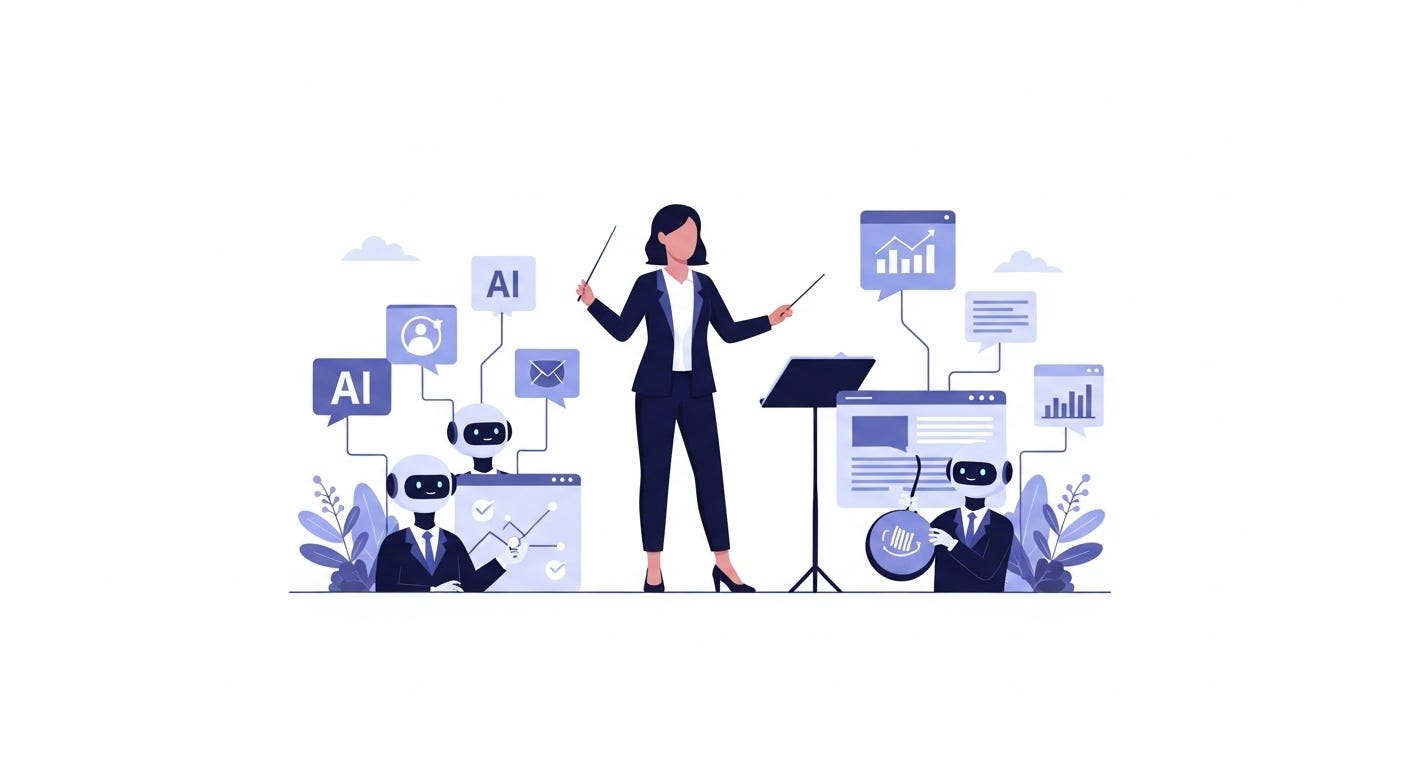
Maria’s story isn’t unique — it’s a preview of what’s possible when solo entrepreneurs embrace AI as a force multiplier rather than a threat.
The businesses that will thrive in the next decade won’t be those with the most employees, but those with the smartest systems. AI agents allow solo entrepreneurs to compete with larger agencies while maintaining the agility and personal touch that clients value.
The New Solo Entrepreneur Playbook:
1.Identify your unique strategic value
2.Automate everything that doesn’t require that value
3.Use freed capacity to serve more clients or charge premium rates
4.Position AI capabilities as competitive advantages
5.Scale systems, not just hours
Maria went from being a bottleneck to being a conductor, orchestrating AI agents to deliver exceptional results for more clients than ever before.
The question isn’t whether AI will change solo entrepreneurship — it’s whether you’ll lead that change or be left behind by it.
If you’re a solo entrepreneur feeling trapped by your own success, Maria’s approach offers a roadmap. Start small, automate incrementally, and prepare to rediscover what’s possible when technology amplifies human expertise.
The future of solo entrepreneurship isn’t working harder — it’s working smarter with AI.
Try Manus AI
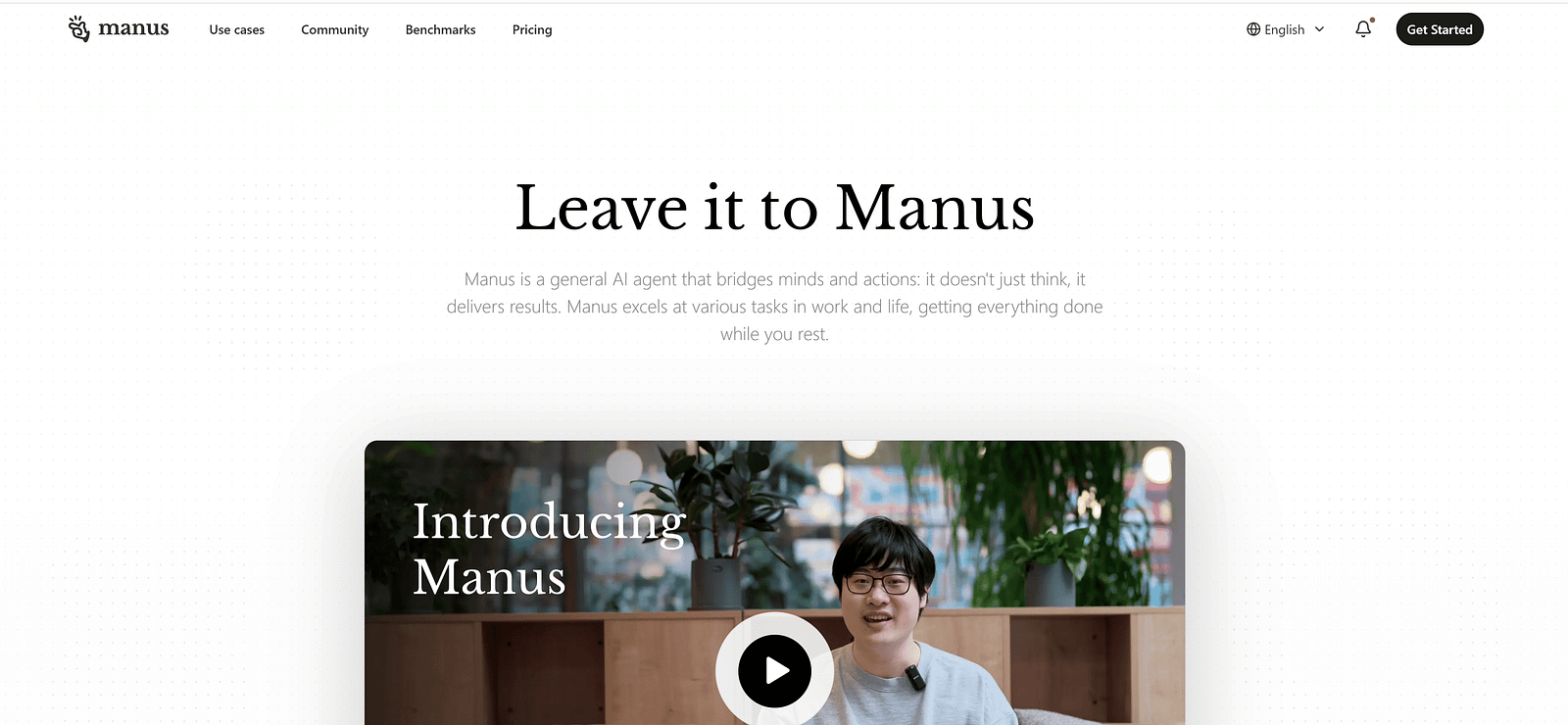
Maria’s transformation didn’t happen overnight, and it won’t happen overnight for you either. But if you’re feeling trapped by your own success — working harder but not smarter — AI agents might be the breakthrough you need.
The tool that made the biggest difference for Marai (and for me) is Manus. I’ve watched her build her entire business automation around it, and I use it daily for my own workflows.
If you’re curious whether this approach could work for your situation, Manus offers a 14-day free trial. No credit card required — just enough time to test whether AI agents can handle the routine work that’s consuming your days.
**Try Manus free for 14 days**
Quick note: That’s my affiliate link, so I earn a small commission if you subscribe after the trial. It doesn’t affect your price, and it helps me continue testing and sharing insights about AI productivity tools. I only recommend what I actually use.
Start small — pick one repetitive task that eats up your time and see if Manus can handle it. You’ll know pretty quickly whether this is going to work for your business.